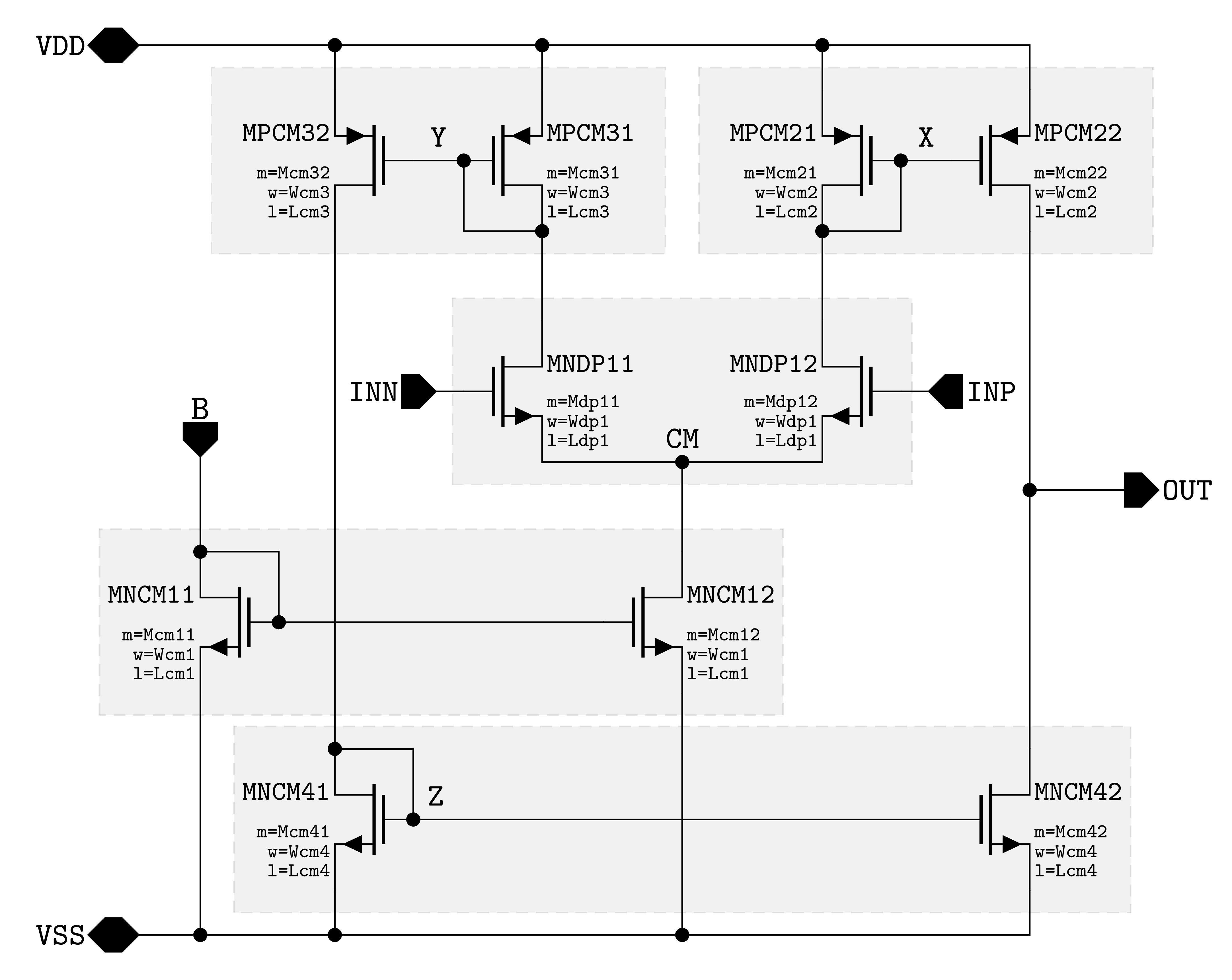circus
Symmetrical Amplifier (SYM)

Available via circus constructor with circus:sym-<pdk>-<space>-<variant>.
Observation Space
By default, the observation space is set to 'perf' via the obs_filter
kwarg. If it is set to 'all' the shape will be (194,) instead. Otherwise it
will be the length of the given list. Same goes for the goal space.
# v0
gym.spaces.Dict({ 'observation': Box( -np.Inf, np.Inf, (29,))
, 'achieved_goal': Box( -np.Inf, np.Inf, (23,))
, 'desired_goal': Box( -np.Inf, np.Inf, (23,))
, })
# v1
gym.spaces.Box( low = -np.inf
, high = np.inf
, shape = (29,)
, dtype = np.float32
, )
Action Space
| Variant | Shape | Parameters |
|---|---|---|
elec |
(10, ) |
['MNCM11:gmoverid', 'MPCM221:gmoverid', 'MNCM31:gmoverid', 'MND11:gmoverid', 'MNCM11:fug', 'MPCM221:fug', 'MNCM31:fug', 'MND11:fug', 'MNCM12:id', 'MNCM32:id'] |
geom |
(15, ) |
['Wd', 'Mcm12', 'Md', 'Lcm2', 'Ld', 'Wcm2', 'Lcm3', 'Wcm1', 'Wcm3', 'Mcm11', 'Mcm22', 'Mcm21', 'Mcm32', 'Mcm31', 'Lcm1'] |
The parameter identifiers can be obtained through the input_parameters field
of the environment.
# elec
gym.spaces.Box( low = -1.0
, high = 1.0
, shape = (10,)
, dtype = np.float32
, )
# geom
gym.spaces.Box( low = -1.0
, high = 1.0
, shape = (15,)
, dtype = np.float32
, )